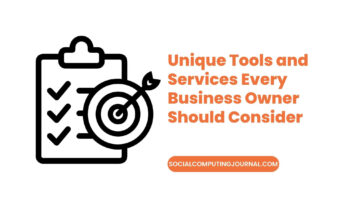Today’s businesses rely on fast, secure, and stable connections to run smoothly. From video calls to cloud storage, everything depends on staying connected. But as companies grow and add more branch offices or remote workers, traditional networks start to show their limits. That’s where Managed SD-WAN comes in. It’s a practical, cost-effective way to improve application performance and enhance network security without making things too complicated.
Here’s a closer look at what Managed SD-WAN is, how it works, and why more businesses are choosing it as a better way to manage their network infrastructure.
Contents
What Is Managed SD-WAN?
SD-WAN stands for Software-Defined Wide Area Network. It’s a way of managing and directing network traffic using software rather than just relying on hardware like routers and firewalls. When SD-WAN is “managed,” it means a third-party provider handles the setup, monitoring, and day-to-day operations for the business.
This approach removes a lot of the pressure from in-house IT teams. Instead of trying to maintain multiple network connections across offices and remote locations, businesses can rely on experts in managed sd-wan to handle everything—from performance optimization to enforcing security policies.
Why Traditional Networks Fall Short
Older networking setups, like MPLS (Multiprotocol Label Switching), were once the standard for secure business communication. However, they were designed before cloud-based applications and remote work became common. Now, with so many employees accessing tools like Microsoft 365, Zoom, or Salesforce from different locations, networks need to be more flexible.
Traditional WANs often struggle with:
Slow application performance for cloud apps
Complex setups for multiple branches
High costs for scaling up
Limited visibility into network activity
Weak integration with modern network services
These limitations not only reduce productivity but also increase the chances of outages and security gaps.
How Managed SD-WAN Solves These Problems
Managed SD-WAN addresses the weaknesses of traditional networks by offering:
1. Simplified Connectivity Across Locations
SD-WAN makes it easy to connect multiple offices, remote teams, and cloud apps. Whether someone is working from headquarters or from home, they get reliable access to company tools. The software-defined approach selects the best network connections for each task, which improves stability and speed.
This smart routing enhances application performance and ensures consistent user experience across all business locations.
2. Improved Security Without the Headache
Security is built into SD-WAN. Features like encryption, firewalls, and real-time threat detection are included. With a managed solution, providers also keep network security systems up to date, which reduces the risk of breaches.
More importantly, businesses can apply consistent security policies across all locations. This helps protect sensitive data and ensure compliance.
Example: If someone tries to hack into the network, SD-WAN spots the suspicious activity and reroutes traffic or blocks it completely, all without needing input from your internal team.
3. Better Visibility and Control
Most managed SD-WAN platforms come with dashboards that show what’s happening across the network. Business owners or IT managers can view performance metrics, spot bottlenecks, and track data usage—all from one place.
This level of visibility helps teams understand how their network services are being used, where improvements are needed, and how to resolve problems faster.
4. Cost-Effective Scaling
Adding a new office or team no longer means installing expensive hardware. SD-WAN is flexible and cloud-friendly, which makes scaling fast and affordable. Providers can set up new sites quickly using software updates rather than physical installations.
This also means the network infrastructure can grow as the business grows, without disruption or long delays.
Who Should Consider Managed SD-WAN?
Any organization that relies on the internet to do business can benefit from SD-WAN. But it’s especially helpful for:
Companies with multiple branches
Remote-first teams
Businesses that use a lot of cloud-based applications
Firms with small or overstretched IT teams
For example, a retail chain with dozens of stores can use managed SD-WAN to connect every location to the main office and cloud services—all while keeping data secure and traffic running smoothly.
What to Look for in a Provider

Choosing the right managed SD-WAN provider is just as important as choosing the solution itself. Here are a few things to consider:
Experience in working with businesses of your size and industry
Support that includes 24/7 monitoring and quick issue resolution
Security features that meet industry standards
Clear pricing without hidden fees
Custom solutions that match your network infrastructure and goals
Asking for a trial or demo can also help in understanding how a provider’s system works before committing long-term.
Final Thoughts
Managed SD-WAN is more than just a technical upgrade—it’s a smarter way to manage and secure business connectivity. As companies grow and their use of cloud-based applications increases, the need for dependable network connections and strong network security becomes even more important. Managed SD-WAN offers a reliable solution by improving application performance, simplifying management, and enforcing consistent security policies. With the right provider, businesses can reduce complexity, cut costs, and keep their operations running smoothly.







